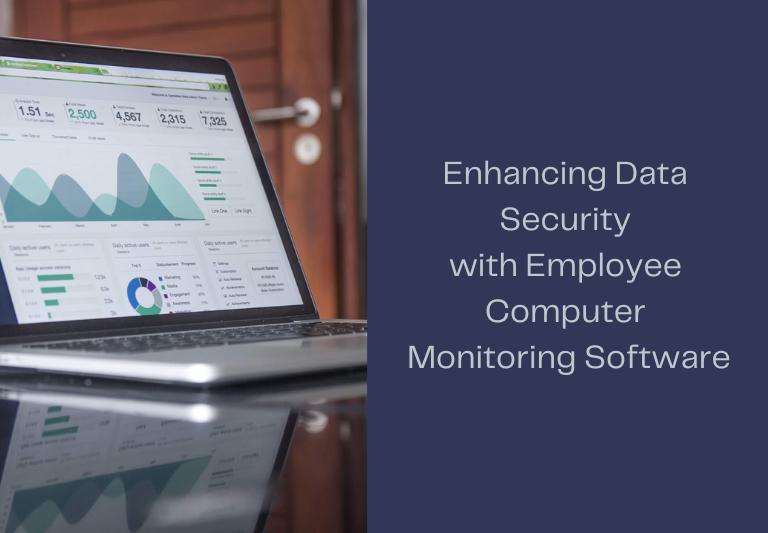The Evolution of Software Tracking: How It Starts and How It Looks Like Now

Software tracking has come a long way since its early days. What started as a simple tool to log basic activities has now evolved into a powerful system that monitors various aspects of employee performance. As businesses grow and technology advances, the need for more sophisticated tracking solutions has increased.
Today, employee computer monitoring software offers a wide range of features, from time tracking to real-time productivity insights. These tools not only help companies manage their teams more effectively but also provide valuable data to improve overall efficiency. In this article, we’ll explore the journey of software tracking—how it began and what it looks like now.
What is Software Tracking?
Software tracking is a tool that helps businesses monitor how employees use their computers during work hours. It tracks activities like time spent on tasks, apps used, and websites visited. This data gives managers a clear picture of how work is progressing.
In addition to monitoring, this instrument provides insights that can improve productivity. It helps identify which tasks take longer and where time is being wasted. With this information, companies can make better decisions to optimize workflows and boost efficiency.
Whether for a small team or a large organization, software tracking ensures that work is being done efficiently and resources are used effectively.
How Does Software Tracking Start?
Software tracking began in the late 1980s and early 1990s when businesses started using computers more widely in the workplace. As computers became essential for daily tasks, companies realized they needed a way to monitor how employees were using these tools. Early tracking systems were basic and mainly focused on logging work hours and recording keystrokes.
By the mid-1990s, as internet usage grew, businesses saw the need to track website visits and online activity. This led to the development of more advanced tracking software. These early systems helped companies manage their workforce better, but they were still limited in scope.
As technology advanced into the 2000s, software tracking became more sophisticated. It expanded to include features like task management, detailed productivity reports, and even real-time monitoring. Today’s software tracking tools are much more comprehensive, offering businesses detailed insights into employee performance and efficiency.
What Types of Employee Monitoring Software Tools Exist?
There are several types of employee monitoring software tools available today, each designed to meet different needs. These tools help businesses track productivity, manage tasks, and ensure work is being done efficiently. Here are some common types:
Time tracking software: This tool logs the hours employees work, tracking when they start and stop tasks. It helps businesses manage payroll and measure productivity.
Screen monitoring software: It takes screenshots or records activity on an employee’s screen. This helps managers see how work is progressing in real-time.
Website and app monitoring software: This tool tracks which websites and apps employees use during work hours. It identifies whether they’re staying focused on work-related tasks or getting distracted.
Task and project management software: These tools help assign, track, and manage tasks. They give both employees and managers a clear view of project progress and deadlines.
Keystroke logging software: This tool tracks typing activity to measure how much work is being done. It’s commonly used in environments where speed and efficiency are crucial.
Each tool serves a specific purpose, and many companies use a combination to get a full picture of employee performance.
Who Can Use Employee Computer Monitoring Software?
Employee computer monitoring software can be used by a wide range of businesses and organizations. Small companies benefit from it to keep track of how their limited staff is using time and resources. This helps them make sure that every hour counts and that tasks are completed efficiently.
Large corporations, on the other hand, often use monitoring software to manage productivity across multiple teams or departments. With so many employees working on different projects, it’s important to have a clear view of how work is progressing. This software makes it easier to identify where improvements are needed and to ensure that everyone stays on track.
Additionally, remote and hybrid work environments can benefit greatly from monitoring tools. As more employees work from home, it becomes harder for managers to oversee work directly. Monitoring software bridges that gap by providing real-time insights, regardless of where employees are located.
From small businesses to global enterprises, anyone looking to improve efficiency, manage performance, and streamline workflow can use employee computer monitoring software.
What Benefits It Brings?
Employee monitoring software brings several key benefits to businesses. First, it boosts productivity by giving managers a clear view of how time is spent. With this insight, they can spot inefficiencies and make adjustments to improve workflow. Employees, knowing their work is being tracked, are often more focused and motivated to stay on task.
Another important benefit is better resource management. By tracking how tools and software are used, companies can allocate resources more effectively, ensuring that teams have what they need to be productive without wasting time or money on unused tools.
Additionally, the software improves accountability. It provides clear data on who is responsible for certain tasks and whether deadlines are being met. This transparency helps managers address issues early, preventing larger problems down the road.
Finally, employee monitoring software simplifies compliance with labor laws. By automatically recording work hours, it ensures that employees are compensated fairly and that companies follow legal guidelines for breaks and overtime. Overall, it makes managing a workforce more efficient and effective.
The Overall Picture of Monitoring Software Now
Today, employee computer monitoring software has evolved into a powerful tool used by businesses of all sizes. It no longer just tracks work hours but provides comprehensive insights into how employees work, where time is spent, and how tasks are completed. Modern monitoring tools are more user-friendly and offer real-time data, making it easier for managers to stay informed and make quick decisions.
With the rise of remote work, tracking software has become even more essential. Companies need to keep track of their teams no matter where they are, and this software bridges the gap. It helps businesses maintain productivity, improve communication, and ensure that work is done efficiently, even when employees are working from different locations.
In the current landscape, this software is not just about supervision—it’s about optimizing performance and creating a balanced, productive work environment. With advanced features like AI and real-time analytics, it gives businesses the tools they need to adapt to modern work challenges and thrive in a competitive market.


Comments